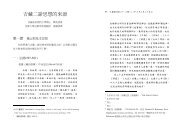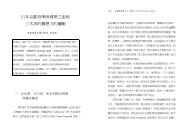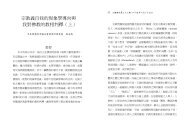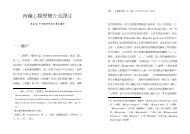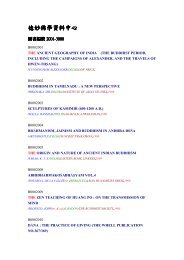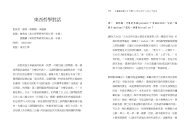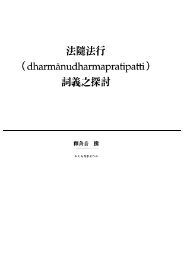從天台宗《法華玄義》「本跡」 詮釋方法上探討「指涉」的宗教哲學問題
從天台宗《法華玄義》「本跡」 詮釋方法上探討「指涉」的宗教哲學問題
從天台宗《法華玄義》「本跡」 詮釋方法上探討「指涉」的宗教哲學問題
You also want an ePaper? Increase the reach of your titles
YUMPU automatically turns print PDFs into web optimized ePapers that Google loves.
從 天 台 宗 《 法 華 玄 義 》「 本 跡 」 詮 釋 方 法 上 探 討 「 指 涉 」 的 宗 教 哲 學 問 題 4344 正 觀 雜 誌 第 三 十 六 期 / 二 ΟΟ 六 年 三 月 二 十 五 日positive value of the sacred and negative value of the profane, whichis closely related with a semiotic problem: If the world of humanexistence embodies a negative value, how can it still refer to thesacred finding its expression as ultimate value? How must beunderstood referential correlation between the sacred and profane inthose concepts of various soteriological traditions of world religions?In other words, the correspondence between the signifying world ofour existence and the signified sacred meaning must become aphilosophical problem in religious semiotics which no type ofsoteriology can neglect; and this problem belongs to the field ofreligious philosophy. I would say that both the western tradition ofnegative theology and the Tiantai Buddhist speculations on‘non-duality between traces and origin’ obviously point to thisphilosophical issue in religious semiotics.In De Divinis Nominibus Dionysios Areopagita appropriatesNeoplatonic semiotics to explain the relationship between God andworld; the world of our existence is a copy or shadow of the originalof God, therefore the two are not identical but similar, which meansthat, ultimately, there is a gap between them; ontologically, thehierarchy of two levels of being – those of God and world – points toGod’s transcendence. However, just because of their similarity, theworld could be seen as an image, whereas God would be the original,the world depicts God. In other words, the world is the signifyingsign and God the signified meaning. Again, because of theontological gap between the signified and signifying, the two are notidentical, and therefore, ultimately, the signified cannot be designatedas well as the signifying, ultimately, remains a negative mode of thesignified. Areopagita says that God is related to the world like thestamp, which can imprint yet cannot be found in its imprints. Thissimile expresses that the relation between the signifying and signifiedcorresponds to the ontological transcendence of the sacred towardsthe profane.Keywords: Negative Theology, Tiantai School, Soteriology,Semiotics, Signifying, Signified, Root and Traces, Non-Dualitybetween/of the Sacred and Profane.




